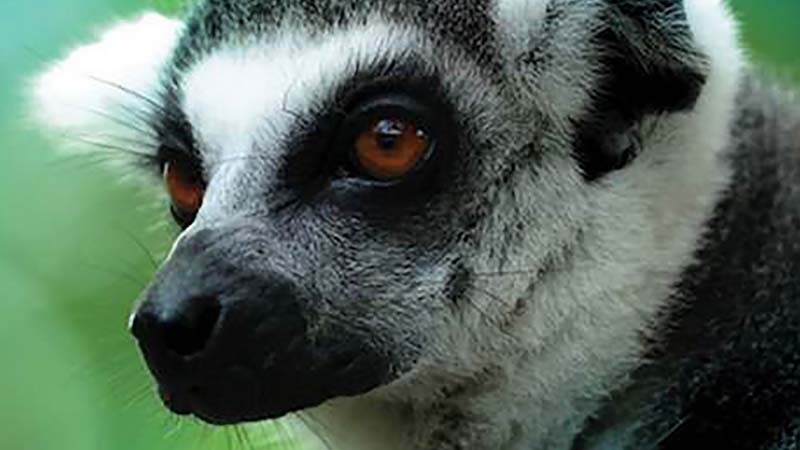
Canada’s Blue Ant Media has made 4K its calling card. The company has committed to 300 hours of native 4K content a year, betting on a future that is all about ultra high definition.
Like almost everyone, from Japanese public broadcaster NHK and satellite companies to indie production houses of all sizes, Blue Ant believes a sharper, brighter future is inevitable. As the industry worldwide upgrades at every point in the production and distribution process, the question is less about if the broadcast environment will catch up than about when.
The advantage is simple: being ahead of the game, says Vanessa Case, Blue Ant’s executive vice president of content affairs.
“4K will very quickly become the norm, and we will have the product there available for people to see,” she says.
Case believes the migration to 4K will happen much more quickly than the transition from SD to HD. “With each new phase of technology everybody gets that much wiser on how to do it faster and do it better,” she says.
If the rest of the eco-system is moving towards 4K, not all the pieces are in place yet for full-blown, mass-market 4K broadcasting. Like others ahead of the curve, Blue Ant airs the majority of its content down-converted to HD on Canadian linear service Love Nature.
Internationally, the channel brand is one of three that Blue Ant Media is rolling out in Asia in partnership with Singapore-based indie distributor, Multi Channels Asia (MCA). Love Nature’s two companion channels are Love Nature: Baby Wildlife and Love Nature: Vistas. Blue Ant Media’s content is also syndicated globally.
Case says the biggest question channel programmers have is whether the content is true 4K rather than up-converted. She adds that this is not dissimilar to the issues raised in the migration from SD to HD. “We’re really focusing on the original 4K signal, to do it in its truest form,” she says.
The biggest challenge in the 4K environment is storage. “UHD, 4K, takes pretty much four times the amount of storage that an HD hour does... imagine that processing time ...
Canada’s Blue Ant Media has made 4K its calling card. The company has committed to 300 hours of native 4K content a year, betting on a future that is all about ultra high definition.
Like almost everyone, from Japanese public broadcaster NHK and satellite companies to indie production houses of all sizes, Blue Ant believes a sharper, brighter future is inevitable. As the industry worldwide upgrades at every point in the production and distribution process, the question is less about if the broadcast environment will catch up than about when.
The advantage is simple: being ahead of the game, says Vanessa Case, Blue Ant’s executive vice president of content affairs.
“4K will very quickly become the norm, and we will have the product there available for people to see,” she says.
Case believes the migration to 4K will happen much more quickly than the transition from SD to HD. “With each new phase of technology everybody gets that much wiser on how to do it faster and do it better,” she says.
If the rest of the eco-system is moving towards 4K, not all the pieces are in place yet for full-blown, mass-market 4K broadcasting. Like others ahead of the curve, Blue Ant airs the majority of its content down-converted to HD on Canadian linear service Love Nature.
Internationally, the channel brand is one of three that Blue Ant Media is rolling out in Asia in partnership with Singapore-based indie distributor, Multi Channels Asia (MCA). Love Nature’s two companion channels are Love Nature: Baby Wildlife and Love Nature: Vistas. Blue Ant Media’s content is also syndicated globally.
Case says the biggest question channel programmers have is whether the content is true 4K rather than up-converted. She adds that this is not dissimilar to the issues raised in the migration from SD to HD. “We’re really focusing on the original 4K signal, to do it in its truest form,” she says.
The biggest challenge in the 4K environment is storage. “UHD, 4K, takes pretty much four times the amount of storage that an HD hour does... imagine that processing time in an edit suite,” Case says.
High frame rate is another complexity. “It’s all basically connected to how you’re taking the image from the field at its highest quality and how you’re ultimately processing it and storing it for post,” she explains. “Dealing with specifically the high frame rate is something coming up more and more that needs a bit more solution-oriented workflow,” Case adds.
The benefits of producing in volume are cost efficiencies. Bulk commissions mean production budgets increase an average of 10%-20% when producing in 4K. “If you’re just going to come in with a one-off project, I imagine the percentages are going to be higher,” Case says.
Overall, she says any production hurdles come from the technical specifications of and the workflow in post – not anything in the field.
“People are going out in the field and shooting with better cameras, and your production teams out in the field love that... obviously they have to know what they’re doing, but if you’ve got the right cameras, if you’ve got the right lenses, you’re going to deliver fantastic product,” Case says.
Blue Ant’s 4K titles are split into two categories. About half the 300 hours a year are factual, including natural history, wildlife, blue chip, clip-based. One of the documentary titles is short-run series, Land of Gremlins (3x60 mins), produced by Off the Fence. The show explores the wildlife of Madagascar. Land of Gremlins premieres this fall on the Love Nature linear channel in Canada.
The other 150 hours will be what Blue Ant calls “slow TV”. Case explains these shows are “really capitalising on beautiful imagery, set to music, no voice-overs or people, and really just allowing it to be a constant scene that goes from one to the next to the next.” Love Nature’s spin-off channels, Baby Wildlife and Vistas, will feature this slow, lean-back TV content, which Case sees as a chance to, “showcase the best of what 4K can offer”.
The series Undiscovered Vistas, for instance, is filmed using helicopters and drones as well as shots way down on the ground in order to get deep into nature, Case explains. The epic experience is not only on the viewer end. “Flying a 4K camera over the lip of Niagara Falls, just two metres above water level, was the most impressive and intimate experience I have ever had as a producer,” says Craig Colby, director of production at Blue Ant. “It was like standing on the edge of the falls and peering into the crush,” he says, adding: “I have never seen shots as close and clear”. – Emily Seibel
This article originally appeared in ContentAsia's print issue published on 20 October 2015.



















